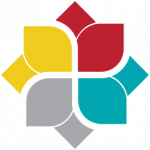Complementary and Alternative Medicine Curriculum
اسلاید 1: www.tabaye.ir
اسلاید 2: Complementary and Alternative Medicine Curriculum: Who Needs It? Educational Challenges and StrategiesVictor S. Sierpina, MDW.D. and Laura Nell Nicholson Family Professor of Integrative MedicineUTMB
اسلاید 3: ConcernsEvidenceBiological plausibilityAdvocacySafetyProduct qualityPlacebo
اسلاید 4: ChallengesCommunicationContentCritical thinkingConsider public safety issues
اسلاید 5: NCCAM Domains of Alternative TherapiesBiological therapies: herbs, supplements, special dietsMind-body therapies: meditation, biofeedback, relaxation, yoga, tai chiManual therapies: chiropractic, massage, osteopathyBiofield therapies: magnets, healing touch, therapeutic touch, ReikiAlternative systems: traditional Chinese medicine, Ayurveda, naturopathy, homeopathy
اسلاید 6: Key questions1) Given the wide public use of CAM, how do health professionals learn to communicate with patients about such therapies and 2) How do they assess such therapies for safety and efficacy?
اسلاید 7: IOM CAM Committee Recommendations1) Health profession schools must include sufficient content on CAM so that graduates can competently advise their patients 2) That funding be provided to train research training for CAM practitioners3) That training standards and practice guidelines be established by CAM practitioners 4) That competency guidelines be defined for both CAM and conventional practitioners regarding scope of practice, referral patterns, and integration of conventional and CAM therapies.
اسلاید 8: ResourcesIOM Report: Complementary and Alternative Medicine in the United States, http://www.nap.edu/openbook/0309092701/html/1.html#pagetopWhite House Commission on Complementary and Alternative Medicine Policy http://www.whccamp.hhs.gov/finalreport.htmlNational Education Dialogue (handout for member list and mission)
اسلاید 9: WHHCAMP Recommendations“The education and training of CAM and conventional practitioners should be designed to ensure public safety, improve health, and increase the availability of qualified and knowledgeable CAM and conventional practitioners and enhance the collaboration among them."
اسلاید 10: WHHCAMP recommendations“Conventional health professional schools, postgraduate training programs, and continuing education programs should develop core curricula of knowledge about CAM that will prepare conventional health professionals to discuss CAM with their patients and clients and help them make informed choices about the use of CAM.”
اسلاید 11: ResourcesNational Center for Complementary and Alternative Medicine http://nccam.nih.gov/Progress Notes Series on Curricular Initiatives http://cam.utmb.edu/cam_education_series.asp
اسلاید 12: R 25 Grantees2000Boston Children’s Hospital/ Harvard Medical SchoolRush Presbyterian St. Luke’s School of NursingUniversity of MinnesotaUniversity of North CarolinaUniversity of Texas Medical Branch
اسلاید 13: R 25 Grantees2001Maine Family Medicine ResidencyGeorgetown Medical SchoolTufts Medical SchoolUniversity of MichiganUniversity of Washington Medical School 2002American Medical Student AssociationOregon Health Sciences University University of KentuckyUniversity of California at San Francisco University of Washington School of Nursing
اسلاید 14: Consortium of Academic Health Centers for Integrative Medicinehttp://www.imconsortium.org27 US and Canadian Medical Schools“Our mission is to help transform medicine and healthcare through rigorous scientific studies, new models of clinical care, and innovative educational programs that integrate biomedicine, the complexity of human beings, the intrinsic nature of healing and the rich diversity of therapeutic systems.”
اسلاید 15: What is Integrative MedicineDefinition: “Integrative Medicine is the practice of medicine that reaffirms the importance of the relationship between practitioner and patient, focuses on the whole person, is informed by evidence, and makes use of all appropriate therapeutic approaches to achieve optimal health and healing.” –CAHCIM definition
اسلاید 16: Elements of Successful Curricular ChangeLeadershipCooperative ClimatePoliticsParticipation by Organizational MembersHuman Resource DevelopmentEvaluationBland et al. Academic Medicine, 2000;75(6):575-594
اسلاید 17: Proposed Consensus of CAM Education Goals for Medical Schools· Provide basic knowledge of the language and domains of CAM· Teach critical thinking skills in assessing evidence regarding CAM practices· Make known essentials about safety, efficacy, risks of CAM, as well as potential for interaction of CAM practices with conventional medical treatment Sierpina, V. Alt Therapies Health & Med 2002; 8(6): 102-104· Encourage communication skills in advising patients about CAM practices· Promote cultural competency regarding CAM practices· Provide knowledge about the role of interdisciplinary health care teams including referral processes to CAM practitioners in the present health care system
اسلاید 18: Core Goals of UTMB’s CAM Curriculum1) Communicate effectively with patients about CAM use.2) Access and interpret the evidence for safety, efficacy, and clinical appropriateness of CAM therapies.3) Develop a therapeutic relationship that is patient-centered and includes respect for a pluralism of cultural and religious values.4) Develop positive personal perspectives on the construct of wellness and of illness.
اسلاید 19: Longitudinal CAM CurriculumSummary (hand out)Design Model (hand out)










نقد و بررسی ها
هیچ نظری برای این پاورپوینت نوشته نشده است.